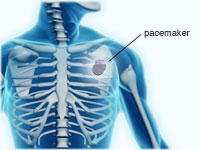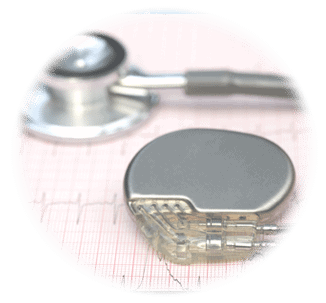
Heart monitor implant side effects update#
Update on cardiovascular implantable electronic device infections and their management. In EG Nabel, ed., ACP Medicine, section 1, chap. Pneumothorax resulting from subclavian puncture: a complication of permanent pacemaker lead implantation. HRS/EHRA expert consensus on the monitoring of cardiovascular implantable electronic devices (CIEDS): Description of techniques, indications, personnel, frequency, and ethical considerations. This might happen if a pacemaker lead breaks or a lead moves out of place. Device problems that need another procedure to fix them.This means that about 99 times out of 100 there is no infection. An infection might happen about 1 time out of 100. Infection in your chest near the pacemaker.

Blood clots in your arms, which cause a lot of swelling.Pain, bleeding, or bruising soon after the procedure.And most people do not have long-term issues with their pacemakers. But your doctor can solve most of these problems. Problems after the procedure can be minor, like mild pain, or serious, like an infection. These problems include heart attack, stroke, or the need for an emergency surgery. Serious problems during the procedure are very rare.This problem may happen about 1 to 5 times out of 100 procedures. But a pneumothorax can be treated, and people recover well. The space between the lung and the chest wall. If problems happen during the procedure, doctors can likely fix them right away. You will see your doctor regularly to check your pacemaker and make sure you don't have any problems.ĭuring the procedure. The procedure to implant a pacemaker is safe, and most people do well afterward. There are several risks to getting a pacemaker. Time following heart surgery or when waiting for a permanent pacemaker to be Temporary pacemakers are most commonly used for a short The batteries usually last 5 toġ5 years before they need to be replaced.Īttached to the heart by a wire threaded through a neck vein, a leg vein, or Permanent pacemakers are powered by batteries. Pacemakers are surgically implanted into the chest.

Quickly your heart rate should return to a resting rate. Your doctor can decide how fast the pacemaker should respond and how Natural heart rhythms and are able to raise heart rate in response to physicalĪctivity. Often the ideal choice for active people. They can sense when your activity increases and respond by Ventricles in a pattern that closely resembles the natural heartbeat.Īll new pacemakers are rate-response, or physiologic, A dual-chamber pacemaker synchronizes the rhythm of the atria and Send electrical impulses to both the atrium and the ventricle and pace bothĬhambers.


 0 kommentar(er)
0 kommentar(er)
